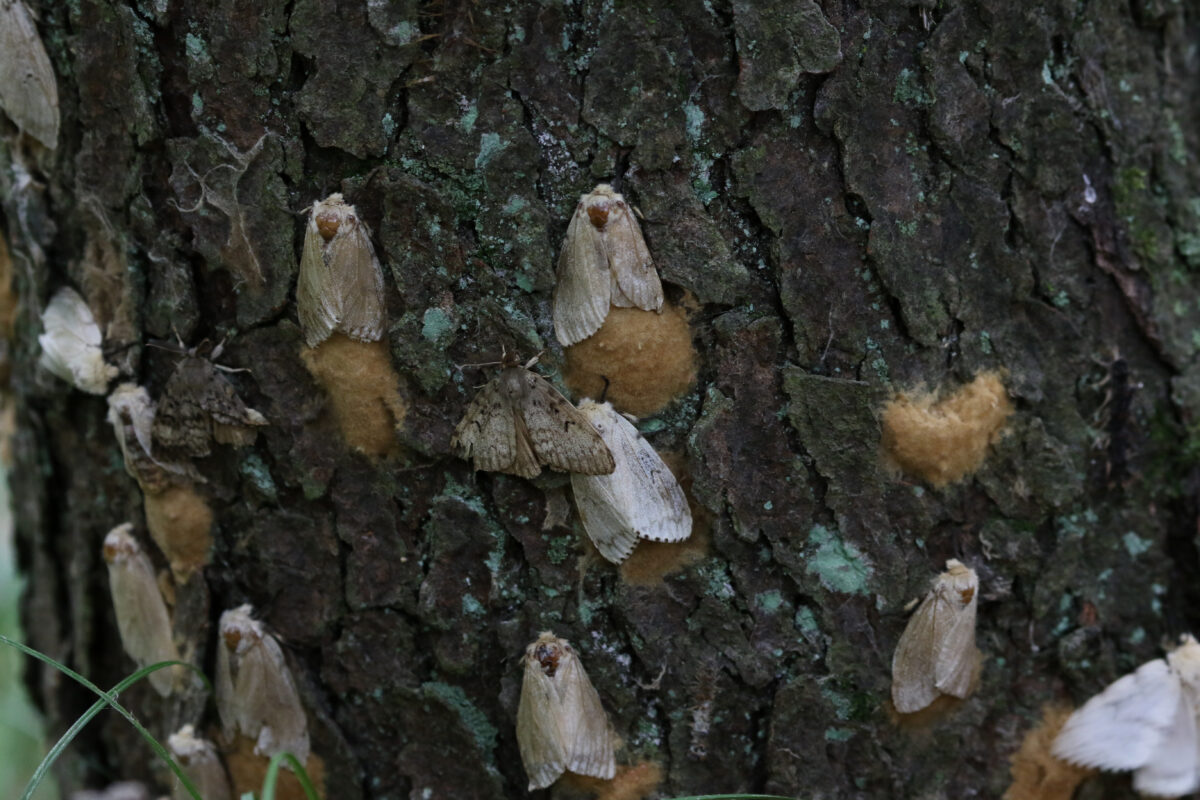Gypsy Moths Are Invasive To The United States
Gypsy moths were first introduced to the United States in the mid-nineteenth century to establish a new silkworm industry in the West by interbreeding them with silk moths. They escaped and subsequently spread. Females are flightless and off-white, while males are brown and fly in a zig-zag pattern during the day.

While not a current issue in our region, they have caused significant damage to trees in the north-central and northeastern US. There is still concern that they may move in to our area as they are masters at hitchhiking a ride by laying eggs on vehicles that move from one region to another. State agencies have aggressive programs to monitor the presence of gypsy moth in Missouri. While a few adults are found each year, there has been no significant increase in numbers that are causing alarm.
Gypsy Moths Defoliate Trees
While they may not be here yet in significant numbers, they are a destructive pest that is worthy of active monitoring efforts. Gypsy moths are notorious for defoliating their host plants, which include most species of oak, birch, willow, hawthorn, fruit trees, and many shrubs. In Missouri, they prefer oak trees. It may take years to see the effects of an established gypsy moth community. Symptoms of a gypsy moth infestation include:
- Tree defoliation
- Tan egg masses
- Reddish-brown pupal cases hanging from the tree’s trunk
Control Gypsy Moth When Populations Are Low
Kill eggs as you see them. Eggs are usually laid on the underside of branches, on trunks, and other shady spots in July or August and hatch in April. Egg masses contain several hundred eggs and resemble dirt on trees. Sometimes, they can even be found on vehicles which make it easy for them to spread to other areas.
Maintaining the health of your trees and getting them regularly inspected by a Hansen’s ISA Certified Arborist can help prevent infestations before they starting. You can also plant resistant trees like tulip poplar, locust, sycamore, or silver maple. Ash trees are also resistant to gypsy moths but are vulnerable to emerald ash borer.
